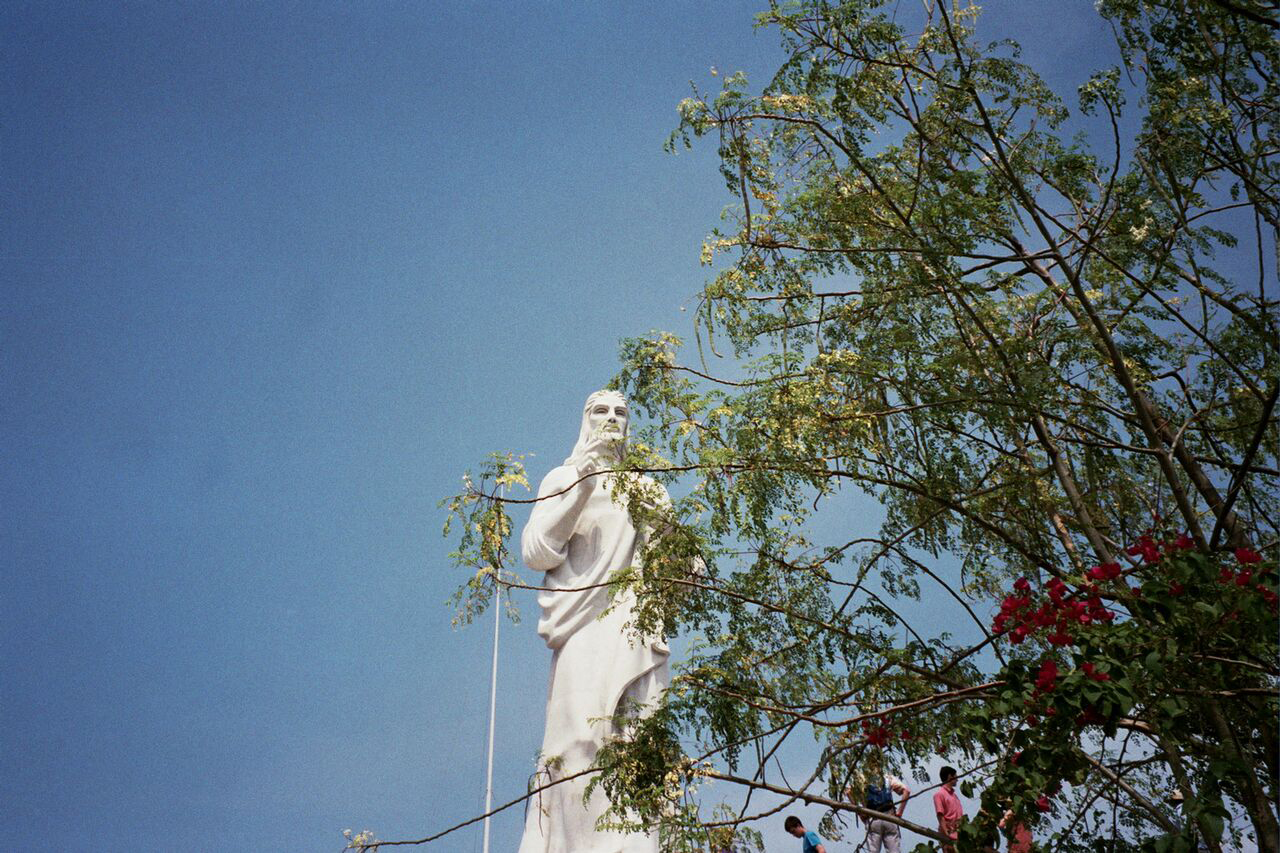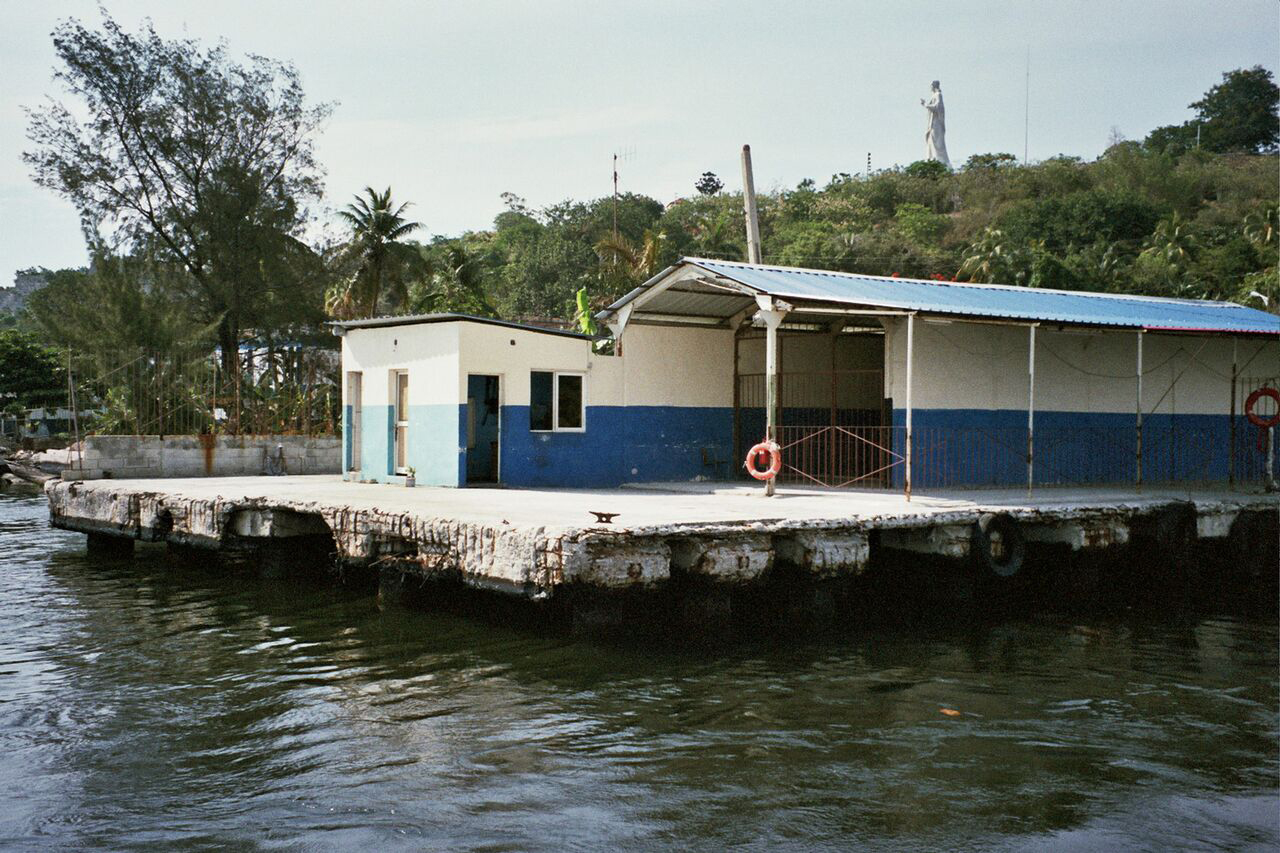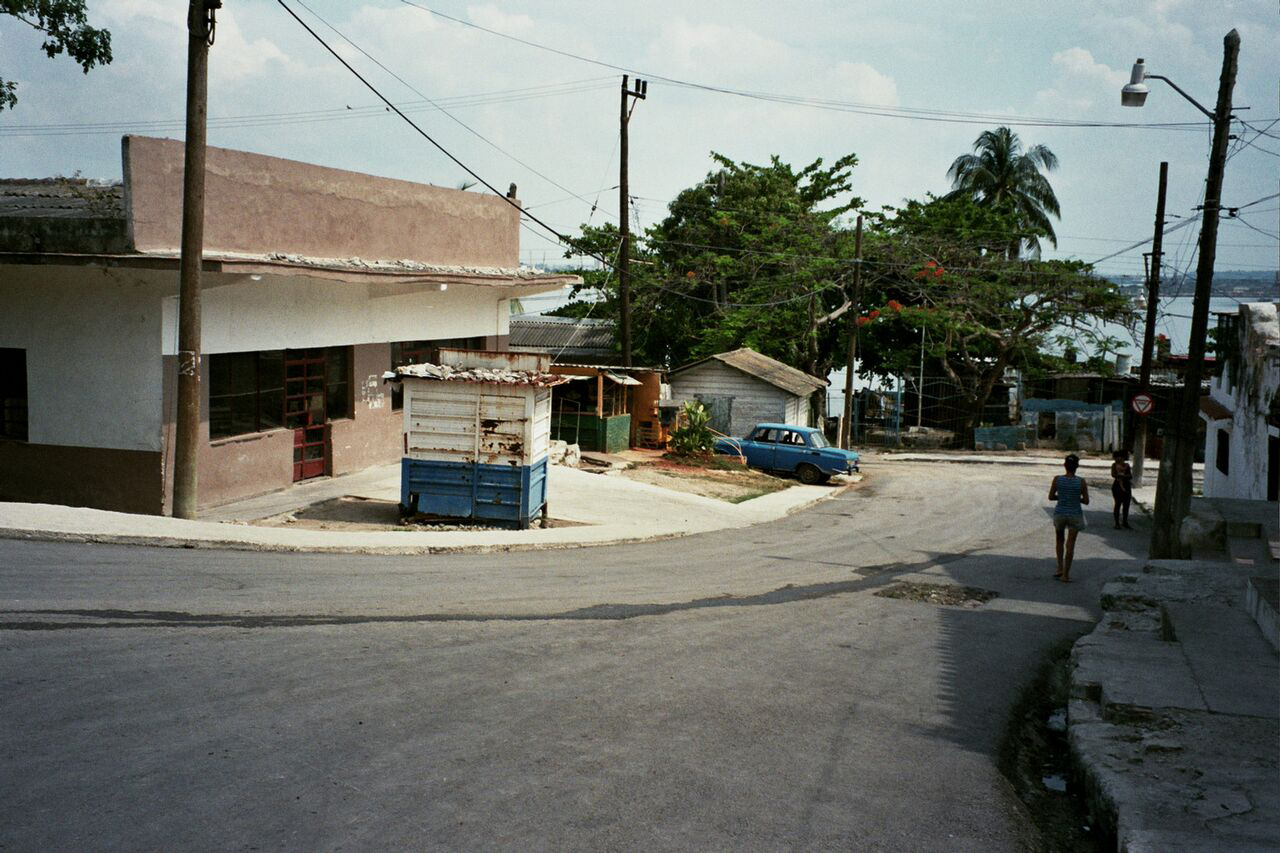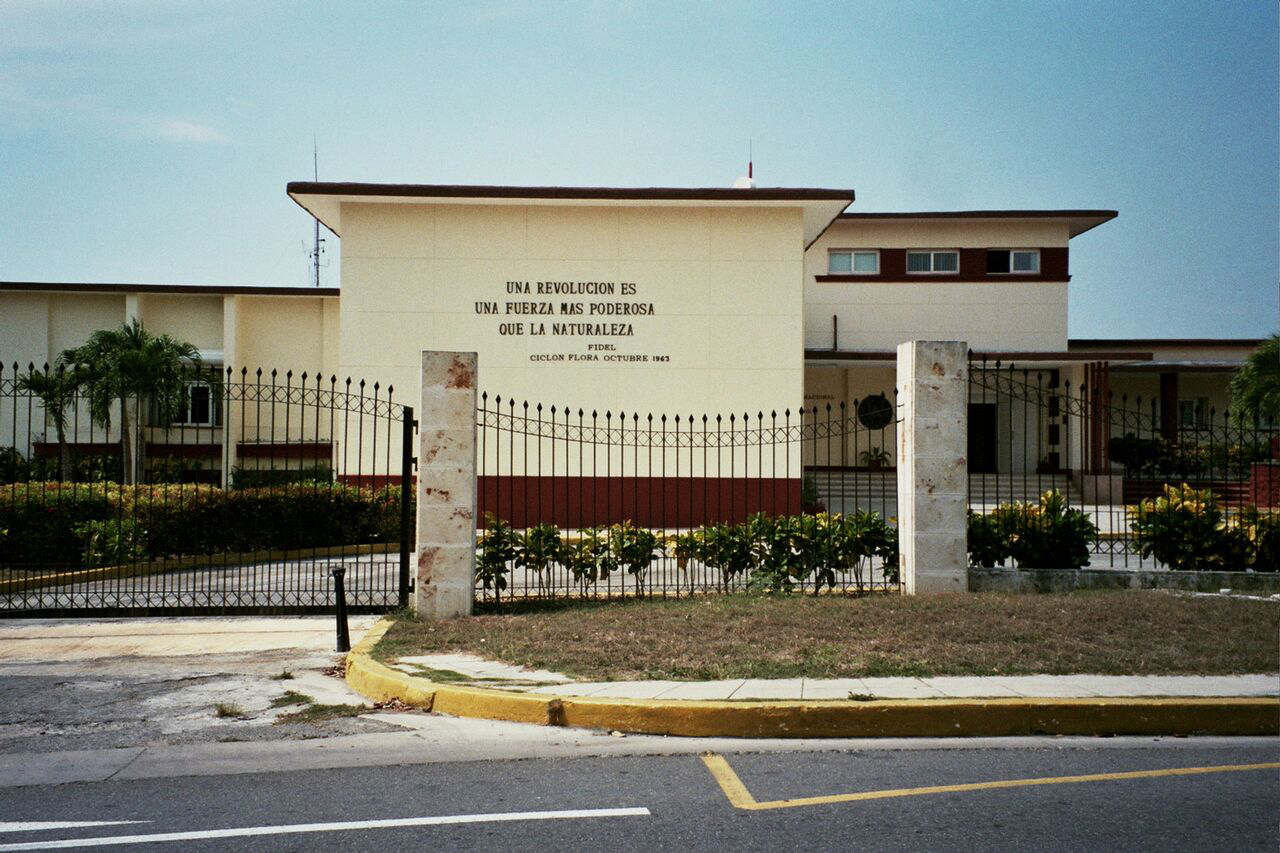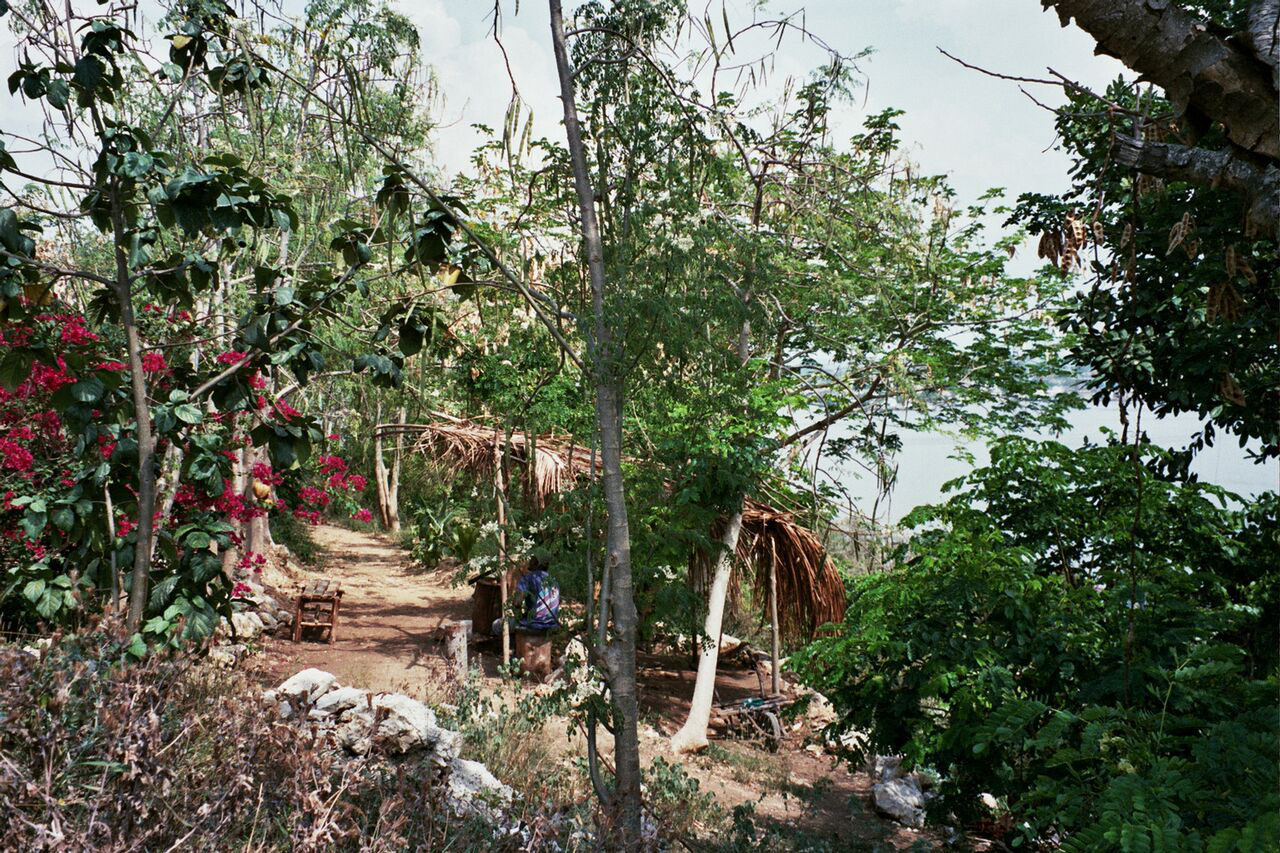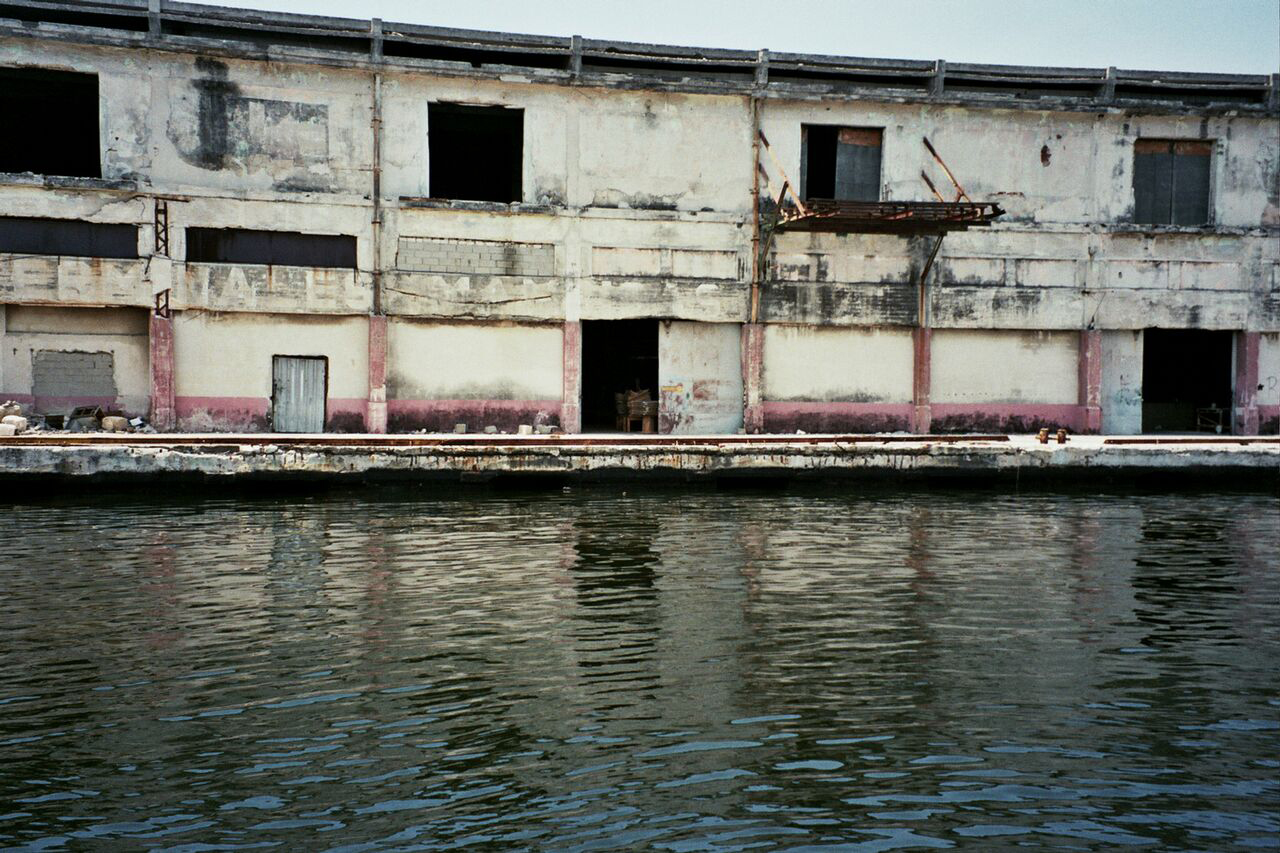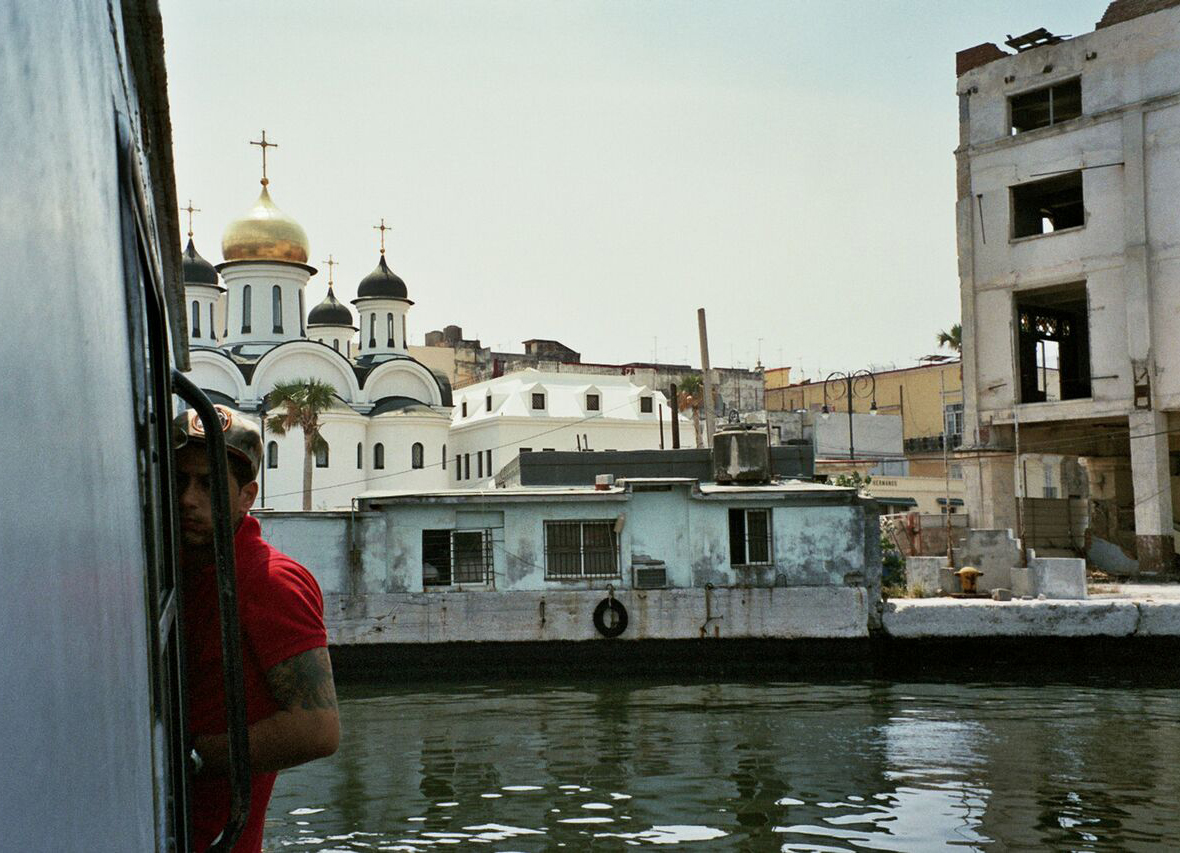Havana is an unrated gem. Someone had mentioned to me that you can take a boat across the harbor to the other side, but that not many people went there. I wanted to find out for myself. I stepped onto this boat filled with fishermen and old women carrying grocery bags. I assumed these women were from Casablanca, coming across the harbor to get produce for their families. The fishermen had long metal rods carried over their backs with dead fish dangling from ropes. It wasn’t the most pleasant smell, but nevertheless was interesting visually. As we made our way across the harbor, I saw the dock in the distance. Turquoise umbrellas and a little shack covered haphazardly in Cuban tiles wait at bay. I got off the boat and to my surprise I felt like I had traveled to another island. The old city is very flat; the architecture is consistent and grandiose, but here it was different, very different. It was hilly, lush with plant life and very obviously poor. I saw a giant statue in the distance and decided I would make my way towards it. As I walked up this steady hill, recording self portrait audio files on my iPhone. I felt like I was walking through a jungle, the noise coming from the trees was so intense. Peacocks walked across the road, I didn’t see one car in sight, a very different vision from Havana where you can’t escape them. The sea was no longer visible as the trees and vines created an illusion of depth and mysticism along the road. I made my way to the top to discover a giant statue of Jesus. He stood at least 20 meters high. There was an old man who had made a house from wood scraps and decorated it with old textiles. He lived beneath Cristo and made miniature sculptors of the giant one that shadowed his modest home. I spent the rest of my afternoon wondering the small town that resided along the harbor. It soon became very obvious that this was a place where people did not want to see someone with a camera in their hand, the localism was strong. It was it’s own unique community where tourists didn’t visit. The beauty of this little town was unlike anything I had seen yet. There was an old railroad car that looked like it was from the early 1920’s that sat on the tracks running parallel to the water. Everything was vibrant and gorgeous in the most humbling way imaginable. There was one main road that had two establishments, a paladar and a liquor store. After walking around for a few hours in the humidity I needed a cold drink and a cigarette. I kindly asked permission to come into the paladar. It was ran by an old cuban couple that lived above it. The wife made the meals in her kitchen and brought them downstairs to serve to the customers. It was a tiny room with the back wall blown out that had opened up to a small patio. He kindly walked me to a table, I lit up a cigarette and drank a coca cola while observing the few people around me. I had only sat for a few moments, when halfway through my cigarette I was interrupted by a man with dreadlocks. He asked if I was an American and I shamelessly said "no" and responded back in Italian. He continued to speak English to me anyway and started telling me a little about the history of the town. The town was a result of the Afrocubanismo movement in the 1930’s. It was a place where the black slaves had migrated and incorporated African folklore and history in Cuba. The beauty of his harbor city was that it had still maintained it’s identity through all those years of change. It all came full circle while I had that feeling of unrelatedness when I got off the boat. It all made sense. The city was Cuban, but it was a result of a historical movement that had occurred almost 80 years ago. photographs by Mattea Perrotta and Kate Parfet. Text by Mattea Perrotta

